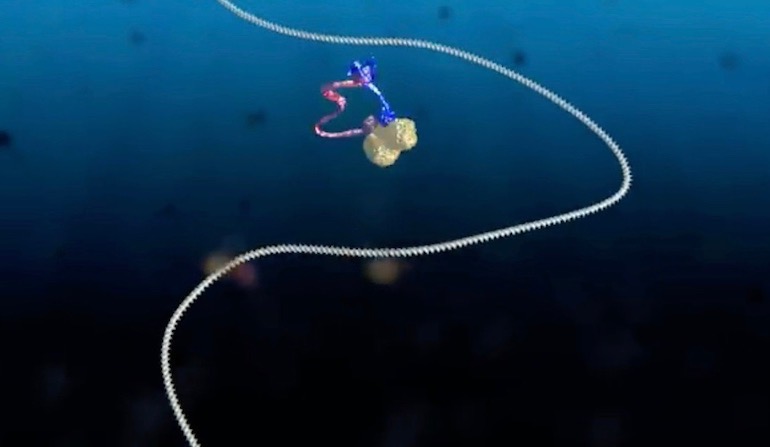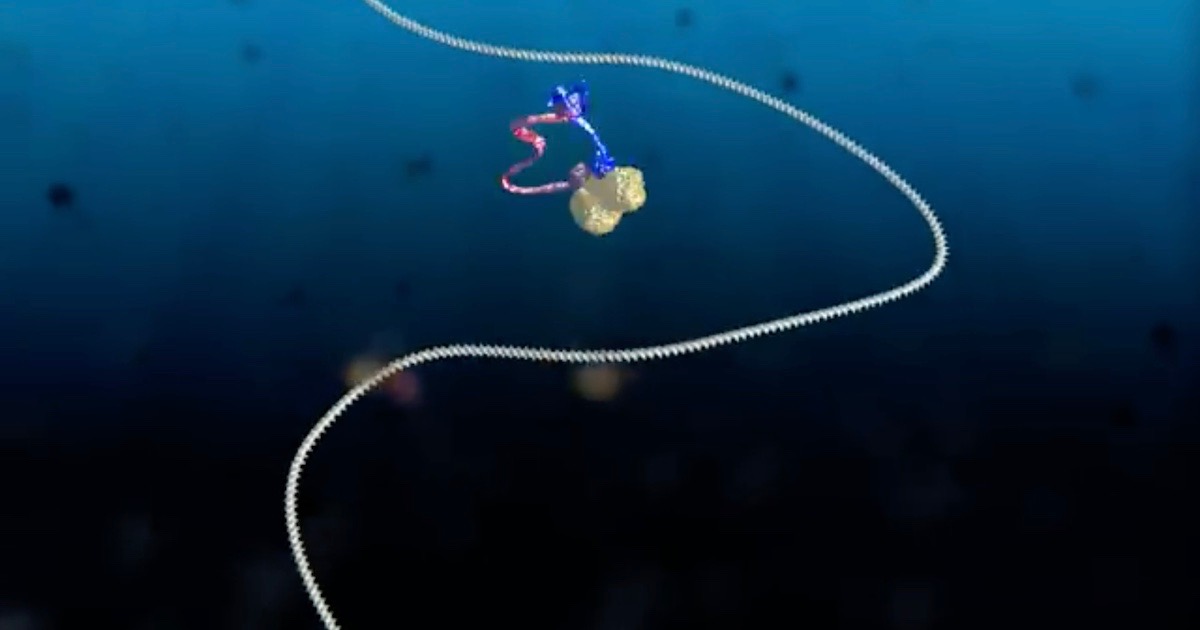 Intelligent Design
Intelligent Design
 Life Sciences
Life Sciences
DNA as Architect as Well as Librarian: Structural Functions of the Double Helix


An assortment of words can do little without the structure of books to arrange them. And an assortment of books can do little without the structure of a library to organize it. The structures may not comprise the information content of the words, but they could be described as informational structures by nature of their ability to organize and present the coded information where it is needed. Could much of what was once dismissed as “junk DNA” function in that fashion?
Modern libraries are increasingly organized by machines that catalog, sort, and position information for readers. In the same way, DNA relies on a host of machines that read the strands, repair the strands, modify the transcripts, and send them where needed in the cell. Wouldn’t it be cool if the same DNA molecule that stores conceptual information also functions as a building block for the walls and buildings of the library? That’s what scientists are finding.
The DNA Balloon
Researchers at the University of California, San Diego, found for DNA “an unexpected role in cell architecture” that’s exciting enough to throw a party over. It pumps up the spore of a bacterium like a balloon.
As a basic unit of life, the cell is one of the most carefully studied components of all living organisms. Yet details on basic processes such as how cells are shaped have remained a mystery. Working at the intersection of biology and physics, scientists at the University of California San Diego have made an unexpected discovery at the root of cell formation.
As reported in the journal Cell on Feb. 8, 2018, biologists Javier Lopez-Garrido, Kit Pogliano and their colleagues at UC San Diego and Imperial College in London found that DNA executes an unexpected architectural role in shaping the cells of bacteria.
Studying the bacterium Bacillus subtilis, the researchers used an array of experiments and technologies to reveal that DNA, beyond serving to encode genetic information, also “pumps up” bacterial cells. [Emphasis added.]
The scientists found that if DNA is not translocated into the spore, the forespore fails to inflate. Is this a unique example of DNA acting as a structural element? The first author, Javier Lopez-Garrido, thinks not. “DNA is best known for being the molecule with genetic information,” he says, “but it’s becoming more and more obvious that it does other things that are not related to that.” The press release says that their work has relevance for human cells, for instance, “in terms of how they are generated and shaped, as well as aid explanations of basic mechanical processes and the structure of the nucleus and mitochondria.” It appears this structural role applies widely in many cells, beyond the specific instance they studied regarding spore formation in this one species of bacterium.
“Biologists tend to think of cell growth as following normal, biosynthetic pathways, but we found a pathway that is not normal, as it does not depend on processes normally required for growth,” said Pogliano, a professor in the Section of Molecular Biology and the paper’s senior author. “All you need for this cell to grow is to inflate it with DNA and its associated positively charged ions, and the ability to make more membrane so the cell can get bigger. Nothing else seems to be required.”
The discovery is a game changer. The observation that DNA has an architectural role opens up all kinds of research opportunities to find even more structural design in cells mediated by DNA.
“It’s amazing how we are just beginning to scratch the surface of how physics impacts living organisms,” said Pogliano. “This is a unique example of a very simple biophysical property impacting cell shape and it illustrates the value of physicists working closely with biologists. Understanding how physics and biology intersect is a huge area for future growth.”
The Chromosome Looper
The last time we mentioned the protein condensin, the “DNA wrapper,” we learned that scientists were trying to find out if it works as a molecular motor. “Yes,” was the answer last November. Molecular biologists also found that it was fast, and they knew that it caused DNA to form loops. But is it a loop extruder? Boy, is it! A picture is worth a thousand words.
Watch the mighty molecular motor go to work on a strand of DNA in a video clip, above, from the Delft University of Technology.
It’s so impressive: a living cell is able to neatly package a big jumble of DNA, over two meters in length, into tidy, tiny chromosomes while preparing for cell division. For over a century, it has been clear that a cell can do so, but scientists have been puzzled for decades on how the process works. Researchers from the Kavli Institute of Delft University and EMBL Heidelberg now managed for the first time to isolate and film the process, and witnessed — in real time — how a single protein complex called condensin reels in DNA to extrude a loop. By extruding many such loops in long strands of DNA, a cell effectively compacts its genome so it can be distributed evenly to its two daughter cells. The scientists published their findings online in Science First Release on 22 February.
Two more video clips show actual movies of the process that allowed the researchers to prove that the enzyme grips DNA and extrudes it into loops. Here’s one:
And here’s another:
Moving at 1,500 base pairs per second but using only a “modest” amount of ATP fuel, condensin turns a spaghetti mess of DNA into a compact organization.
Structure as a Switchboard
In a final case of DNA structure with function, we see how the packaging of DNA in a cell helps it act like a giant switchboard. News from the Huntsman Cancer Institute at the University of Utah describes how proteins and DNA work in harmony to “orchestrate development.”
Researchers demonstrated that the hundreds of genes important for controlling embryonic development are all packaged in a unique manner in the early embryo — and even as far back as the paternal sperm — and that this packaging helps control how, when, and where different genes are expressed in the embryo. The findings, published today in the journal Cell, have significant implications for understanding how early development is orchestrated, and provides a mechanism for how parental environment might impact the expression of these genes in the offspring.
The findings make it clear that DNA structure is part of its function. It’s not merely a string of code. The way its genetic information is arranged in 3-D space matters. In a real sense, there is a structural code behind the informational code. This helps explain the large stretches of non-coding DNA that confused scientists when the human genome was first deciphered:
They demonstrated that DNA segments (genes) important for controlling development are packaged in physical structures that help turn ‘on’ and ‘off’ genes at different stages of development. These physical structures serve as platforms that help activate or poise these genes, as needed, for normal development. The researchers also identified the protein machines that place these physical structures into the genome, and the proteins that remove them, to ensure their proper placement and function.
Contrary to the old “Central Dogma” that pictured DNA calling all the shots, we now see that the “genetic code” really consists of both DNA and its protein machinery working “in harmony” as a team. This helps explain why a zygote is totipotent — able to generate all the cell types of the adult. A big part of that transformation relies on heritable structures, platforms, and switches in which both DNA and protein machines participate. The physical state of the decision-making genes, they found, determines their role in different cell types. Some of the structural information is inherited apart from DNA, they note:
Researchers have long sought to better understand whether and how genes from mom and dad might be packaged in a manner that influences expression and development in the embryo, and how those packaging states are maintained or reprogrammed during the development process. This study identifies that packaging — termed histone variant H2AFV — and provides a mechanism for inheriting gene packaging, and therefore has important implications for developmental potential and inheritance. Remarkably, although the initial packaging of genes in the paternal sperm differs somewhat from packaging in the maternal egg, the maternal packaging was shown to reprogram to the same packaging state of the paternal genome, thus harmonizing the packaging states from the parents in the early embryo to arrive at the same cellular development state.
These are exciting times for molecular biology. You know you’re on the right track when your expectation of more functional information in the “junk” keeps coming true.
Image: Condensin goes to work, by Delft University of Technology, screen shot via YouTube.
